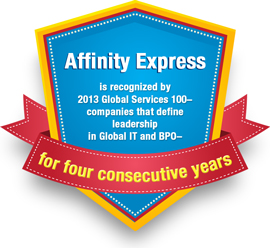2013: The Year of Digital Brands
April 2, 2013 Leave a comment
Sometimes I ask myself if “Digital” is a type of media or is it a congruence of all media. In the past, we would paint on canvases, shoot and store photos on film and listen to music on records. Now “digital” brings all these capabilities together and merges them to appeal to all senses. It allows you to see videos, read case studies and watch product demos, listen to songs, informative webinars and podcasts as well as touch to explore, interact and share your views across the globe. And as far as the customers are concerned, when they want something, they want it personalized, and they want it right away. Only the online environment can meet these kinds of demands.
Many of us realized the importance and started exploring the full potential of digital. While Standard Media Index (SMI) recorded a rise of 4% in U.S. ad spending during the first two months of 2013 versus the same period in 2012, digital spending (including online display, video, search, social, mobile, email, etc.), accounts for the second-biggest share of media spending, representing more than a fifth (21.7%) of the buys made by the major agencies. As a category, digital media buys expanded 16% during the first two months, led by a 12% increase in premium display, a 6% gain in search and a 23% surge on ad networks.
Marketers are increasingly investing a greater chunk of their marketing budget in digital because it includes better metrics, targeted outreach and the ability to connect with consumers in their comfort zone. But another factor is also working in digital’s favor: savings.
As overall marketing budgets increase by an average of 6%, as researched by Gartner, much of the increase in digital spending will come from marketers reinvesting cost savings. When asked how they were funding their digital marketing programs, 41% answered that they were saving money by replacing traditional tactics with digital tactics and that this savings was funding further investment. Another 28% responded that they decreased traditional marketing budgets to free up funds for digital.
However, an even more intriguing trend is the role brands are playing online by investing in building and nurturing their digital identities to have a much wider reach in the virtual world than the physical world. Here are some important steps being taken:
- Creating and sharing great content: Companies are building digital content that becomes the driver of audience engagement and eventually revenue opportunities. Successful online marketers begin by understanding what can capture their target customers’ attention and then weaving in good stories and content that viewers will want to share. Red Bull is one of the brands that used this tactic successfully with their “death defying jump.”
Great content also has a spin-off effect. Successful content marketing experts use COPE: Create Once, Publish Everywhere. While this suggests content should be pushed out on multiple platforms, it also means that content which might not be valuable to one audience in its current form, such as a press release about a senior member joining a company, can be spun into an interesting blog post, which shares the person’s vision, experiences and take on industry trends that many readers may find informative.
- Using social media to extend brand reach: Another big step for brands is going all out and embracing social media to extend their reach. This is a wonderful vehicle that helps in spreading news, creating awareness and providing an environment for meaningful two-way dialogues with target audiences.
A good example was this year’s London Fashion Week, which used digital technology and social media to reach out to the growing segment of shoppers. More than 21 shows at the fashion event were broadcast live on the LFW YouTube channel, of which 60% were live-streamed to the LFW website. Brands, publications and designers used social media sites like Facebook, Twitter and Instagram to share their experiences of fashion week. Participants on Pinterest created a photographic diary of brands and fashion magazines, designers and celebrities; giving the equivalent of “VIP” access to the shows. Twitter trends enabled fashionistas to not only get the opinions of fashion leaders and celebrities, but to also give their own feedback—that is what social media is all about.
- Using visuals for more engaging stories: In their digital journey, brands are slowly but surely evolving to build visual montages that feature everything from their daily accomplishments to major victories. They are using image-driven networks such as Pinterest and Instagram and making compelling visual updates to customer-centric platforms such as Facebook, Google+ and LinkedIn. It is a great opportunity for brands to go beyond traditional “push” marketing tactics and to create videos that address multiple audiences and a variety of consumer needs. A great example is Best Buy that uses its YouTube channel cleverly by using the logo and corporate color palette perfectly for branding.
Visitors are greeted with six videos to choose from and can easily scroll through a variety of video content with a blue slider beneath the featured videos. The channel also shares links to the Best Buy website and social media profiles and highlights their Daily Deals.
It is no wonder why marketers are scrambling to get their brands on a media that offers a vast array of sensory experiences. As business leaders want each dollar spent on marketing to be linked back to sales figures, the need for accountability has accelerated the speed of going digital as this medium allows every activity to be measured, in real time, down to a single click.
So, have you gone ahead with marketing and positioning your organization on digital platforms? How have these efforts affected your brand reach? Share the ups and downs of your digital journey with us.
























